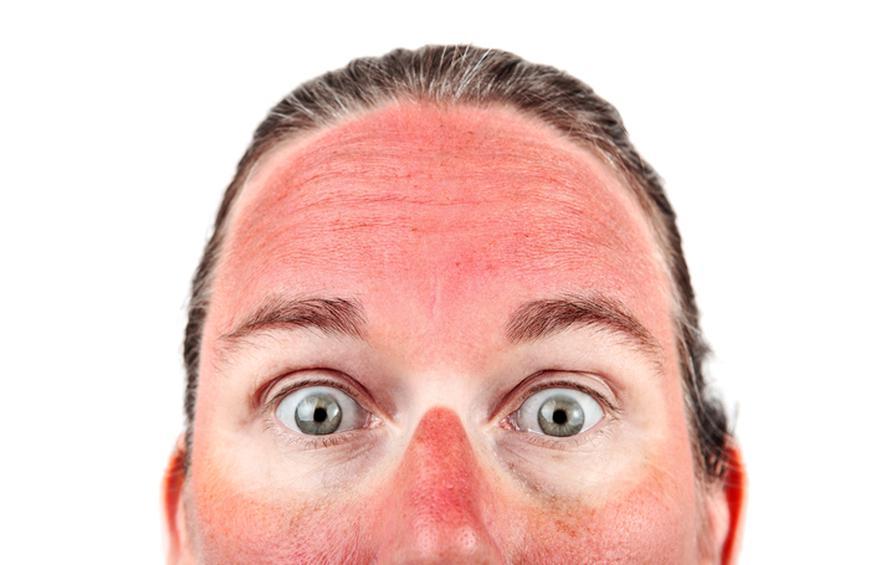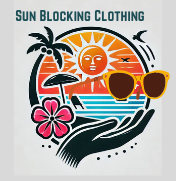
Do you need sun blocking clothing? This image shows sunburn on the nose and face. This is where skin cancer shows up first.
Sunburns like this are what cause damage that does not heal properly and leads to skin cancer. Do you want a patch of skin cancer on the bridge of your nose?
Sun blocking hats can do a lot to protect your nose and face. Hats and sunglasses are the first items we should grab when we know we are going to be exposed to the sun.
Protecting yourself from skin damage and premature aging caused by excessive sun exposure is easier than you think.
Do you recognize the first signs of skin damage? Preventing further damage will be easier when you understand how to use sun blocking clothing
How To Recognize Sun Damage to Your Skin
Excessive sun exposure can have detrimental effects on your skin. Permnant effects.
These effects are leading to damage and premature aging. These harmful ultraviolet (UV) rays from the sun can cause various skin concerns.
This is why it is important to be watching for and recognize the first signs.
Once damage occurs, you can’t undo it.
Preventing damage is better for your skin than trying to repair the damage after it is done.
Let’s look at the impact of sun exposure on your skin. Can you identify the first signs of damage? We will also need to consider some strategies to prevent further damage.
What Is the Impact of Sun Exposure on Your Skin?
Prolonged exposure to the sun’s UV rays can result in several adverse effects on your skin.
The two primary types of UV rays, UVA and UVB, damage your skin because they penetrate the skin’s surface.
Down in the layers of your skin, there is little protection from the radiation in these rays. So, sunburn, photoaging, wrinkles, dark spots, and an increased risk of skin cancer can happen.
Is this want you want from spending time in the sun?
Thinking about how you spend time in the sun, do you need sun blocking clothing?
How To Recognize The Early Signs of Damage
It is crucial to stay aware and identify the early signs of sun damage to take appropriate action. It is important to protect your skin before the damage is done.
So, what are the first signs of skin damage?
Sunburn: Redness, pain, and peeling of the skin after being in the sun for an extended period without protection.
If you are extra sensitive this will occur early on exposure. For some, you may not start turning red for 30 to 45 minutes or longer.
Every skin tone will damage after too long in the sun.
Uneven Skin Tone: Watch for the development of pigmentation irregularities. These can be spots or age spots, caused by sun exposure.
Fine Lines and Wrinkles: Premature appearance of fine lines and wrinkles, especially in sun-exposed areas like your face and neck and at the corners of your eyes.
Dryness and Dehydration: Sun exposure can lead to moisture loss. This of course leads to dry and dehydrated skin.
Rough Texture: Your skin may feel rough, and uneven. It will also have a loss of elasticity due to collagen breakdown caused by the sun’s rays.
Stay aware of how long you have been in the sun.
How To Prevent Further Damage
Once you notice the first signs of skin damage, you must take immediate action to prevent further harm.
Is your skin beginning to look flushed? Is the surface of your skin tender to the touch? Yes, these are the first signs.
Here are effective strategies to protect your skin and halt stop sun damage.
Remember, prevention is important because the damage is permanent. Protect your skin.
What Are Some Sun Protection Measures?
Implementing sun protection measures is crucial to prevent further damage. These sun protection suggestions can help you stay safe in the sun.
You know our first suggestion, but it is an important suggestion, wear sunscreen. Apply a broad-spectrum sunscreen with an SPF of 30 or higher daily, even on cloudy overcast days.
Use any shade you find. Minimize sun exposure during peak hours (10 am to 4 pm) and seek shade from umbrellas, trees, or protective clothing.
Cover your skin. Wear protective clothing, including long sleeves, pants, wide-brimmed hats, and sunglasses with UV protection.
Don’t forget to use lip balm. Apply lip balm with SPF, the higher the SPF, the better to protect your lips from sun damage.
These simple measures are not difficult. Use all the suggestions, not just one or two. Wear sun blocking clothing, remember this includes hats and sunglasses. Wear sunscreen everywhere you are not covered. Remember your face needs help because of reflections of sunlight.
Stay in the shade. Use all the habits. Layers of protection are better than trying to rely on just one thing to be able to protect you.
Clothing protects until you take it off, no reapplying. It is really that easy!
How To Hydrate and Moisturize Your Skin
Keeping your skin hydrated and moisturized is essential in preventing further damage. Moisture is important for maintaining your skin’s health.
The following tips are what our dermatologist suggests are important, so I am sharing them.
Drink enough water. You can stay hydrated by drinking an adequate amount of water throughout the day.
Use moisturizers. Apply moisturizers daily to replace the moisture and restore your skin’s natural barrier.
Hydrating face masks. Incorporate hydrating face masks into your skincare routine to nourish and rejuvenate the skin. These were new to me and I was surprised how much they help to plump your skin and make it look better.
This isn’t rocket science. It is not that hard to protect your skin from sun damage.
What To Do If You Get Sun Damage
Antioxidant-rich skincare is suggested if you get a bit too much sun. Antioxidants help counteract the damaging effects of free radicals caused by sun exposure.
These are 2 suggested skincare steps to take for early skin damage.
- Use Antioxidant Serums: Incorporate antioxidant-rich serums into your skincare routine to help protect against environmental damage.
- Eat Antioxidant-Rich Foods: Include fruits, vegetables, green tea, and other foods rich in antioxidants in your diet.
These are good basic suggestions for better skin health. The skin is important, and like your paycheck, can be used up in a hurry. Do you remember what your skin does for you? This link can help remind you of your skin’s job in protecting you.
Why Regular Skin Check-ups?
Schedule regular appointments with a dermatologist to monitor your skin’s health and address any concerns promptly.
Dermatologists can provide professional guidance, perform skin assessments, and offer customized advice tailored to your skin type and needs.
In my part of central Texas and with my sun history, skin exams are important.
Skin cancer is one of the easiest cancers to heal. You just have to know it is there and needs attention.
However, if your skin cancer is melanoma, and you don’t get it taken care of, it can result in your life.
A few scars are something you can live with.
Prevention can be done. This will reduce the risk of serious skin cancer.
So do you need sun blocking clothing in your protection plan?
Question: Are sun shirts necessary?
This is ‘Skin Cancer.org‘s answer to wearing sun protection shirts:
“Your clothing doesn’t just look great. It also absorbs or blocks harmful UV radiation. Clothing remains one of the most effective forms of protection against sun damage and skin cancer.”
They also state that sun-protective clothing is the simplest way to stay safe.
Unlike sunscreen, you never need to reapply! All you have to do is wear your sun shirt.
Sami’s Take on Why You Need Sun Blocking Clothing
Skin damage and premature aging caused by excessive sun exposure are preventable with the right knowledge and proactive measures.
Can you recognize the first signs of damage? What about implementing effective prevention strategies?
Do you need to add sun blocking clothing as well as make better choices about when to be out in the sun?
Paying attention to sun protection, hydration, antioxidant-rich skincare, and regular check-ups, you can safeguard your skin’s health and preserve its youthful appearance.
Remember, taking care of your skin today will pay off in the long run, so be proactive and enjoy the sun responsibly.
References:
